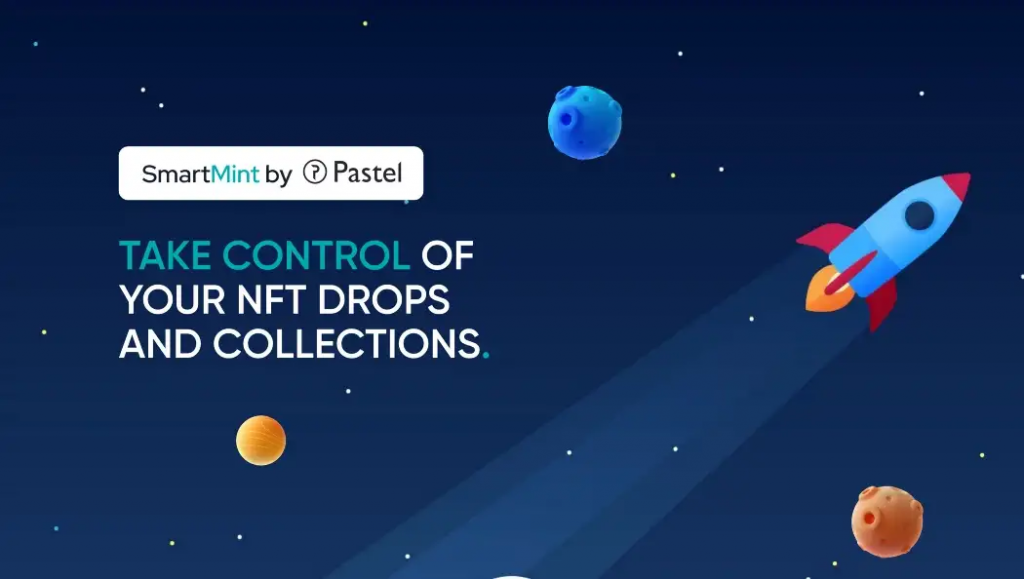In 2022 the market for non-fungible tokens (NFTs)- tokenized images, music, and items, generated $24.7 billion. Just two years before, total sales were just $82.5 million.
This exponential market growth has led to discussions about whether NFTs harm the environment. Activists have expressed concerns about Proof-of-Work (PoW) blockchains like Ethereum, which have been linked to high carbon emissions.
However, PoW NFTs don’t cover the entire market. Several NFT projects, such as Oceans and Us, are using blockchain technology to attempt to solve climate change.
With this in mind, it’s important to consider a balance between environmental sustainability and technological advancements.
How do NFTs affect the environment?
The perception of cryptocurrency’s negative impact on the environment is primarily viewed through Proof-of-Work blockchains like Bitcoin, and specifically for NFTs, Ethereum, which covers 76% of all trading volume. Such networks rely on a process called “coin miningâ€, which is extremely resource intensive.
During the coin mining process, computers on a network (also known as miners) race against one another to solve complex problems, with the “winner†receiving the right to confirm a block. Once a block has been confirmed, the miner that has claimed it can collect all gas fees and a reward.
When the price of a cryptocurrency such as Ether increases, gas fees also rise, and the value of solving a problem is higher. This incentivizes miners to invest more computer power into solving a problem, consequently increasing the amount of power used (and wasted.) It’s estimated that Ethereum miners were using 44.49 TWh per year, or around the equivalent energy of running a house for 2.8 days per transaction.
These numbers aren’t black and white. NFTs only represent a small portion of transactions on the Ethereum blockchain. Therefore it’s difficult to determine whether they’ve significantly impacted the amount of computer power needed to solve problems. While this doesn’t mean NFTs are carbon neutral, their environmental impact may not be as significant as some numbers make it about to be.
Additionally, Ethereum has recently moved from a Proof-of-Work model to a Proof-of-Stake (PoS) model, which we’ll cover in greater detail below.
How Do NFTs’ Impact The Environment Compared to Physical Art
Although NFTs have been in the spotlight for their environmental damage, they may offer an eco-friendly alternative to traditional art.
Traditional art requires resource-intensive processes, with a return flight from New York to London generating almost 1,000kg of CO2. With every tonne of CO2 released, around three square meters of Arctic ice will melt.
Physical art also involves extensive production processes, often involving chemicals that can pollute over 10,000 liters of water. These chemicals usually aren’t picked up by treatment plants and can impact the drinking water in cities where a particular piece of art is exhibited.
The exact numbers for the environmental impact of traditional art are too difficult to calculate, and therefore there are no specific data. That being said, if you look at the creation and distribution of traditional art alone, the carbon footprint is significantly higher than NFTs.
Let’s consider transport, for example. When an NFT is minted, it can be sent to another individual for a small fee and an even smaller carbon footprint. Compared to this, a physical piece of art would use a cargo truck or aircraft. This doesn’t even include the delivery of materials, which adds even more to the environmental footprint of physical art.
Proof-of-Stake Is Helping To Reduce NFT-Related Emissions
As mentioned earlier, Ethereum has moved from a Proof-of-Work model to a Proof-of-stake (PoS) model, but what does this mean for NFTs and climate change?
PoS models use significantly less energy than their PoW counterparts as they don’t require miners to maintain their own mining equipment. With a PoS model, a limited number of powerful nodes run the network validating transactions once they’ve received a certain number of stakes from coin holders.
This prevents the need for large mining operations and lets nodes generate a passive income with staked tokens. Blockchains like Ethereum have now transitioned to a PoS model to reduce carbon emissions, which has made Ethereum 30,00 times more energy efficient.
NFT Projects Supporting Environmental Change
Most mainstream headlines focus on the environmental damage of NFTs, overlooking projects that are designed to impact the environment positively. While many projects attempt to support the environment, two that have already achieved some success are Greenverse and Moss.Earth.Â
Greenverse
Greenverse is a metaverse NFT project designed to help preserve underground resources. The project uses a preserve-to-earn model which tokenizes natural resources. With this model, real-world land is turned into blocks, and each block has an NFT priced on its natural minerals, biodiversity, and carbon emission potential.
Owners will receive rewards for preserving these resources instead of developing the land. Benefits include biodiversity credits and non-production carbon credits. Greenverse was first pioneered in Jameson Land in Greenland, though it has since expanded to Suriname in South America.
Moss.Earth
Moss.Earth is a tech startup looking to help individuals and businesses offset their carbon footprint with tokenized carbon credits. First founded in 2020, Moss.Earth has sent over $30 million to Amazon preservation projects and has announced the release of Moss Amazon NFTs.
Each NFT grants the owner a piece of land in the Amazon forest, which can be monitored using remote sensing tools created by Descartes Labs. 20% of each sale will be used to maintain the area’s security and provide satellite images. According to Moss.Earth, its NFT collection sold out in less than an hour.Â
Final Thoughts: NFTs Need Time To Become Environmentally Friendly
While blockchain-based transactions used for NFTs do some environmental damage, projects are continuously looking for ways to mitigate their environmental impact. For projects like Ethereum, this means moving to a PoS model, while for projects like Greenverse and Moss.Earth, this means using NFT technology to preserve our natural environment.
Regenerative Finance, or “ReFi,†is the niche cryptocurrency movement that uses the blockchain to solve a variety of climate and Earth-oriented issues. EcoSapiens, for example, is a metaverse enabling its community to combat climate change by tokenizing and creating a market for things such as carbon credits.
NFT’s potential to solve real-world problems is huge, however, as with all novel technology, NFTs must be given time to innovate. Technology we use daily, including smartphones, laptops, and TVs, all started with great environmental demands, but recent technological advancements have allowed us to limit their environmental impact.Â
This could be a similar story for NFTs, which have already taken huge strides to limit their environmental impact in just two years since going mainstream. In just a few years, it’s possible that NFTs could not only become carbon neutral but could even help support our fight against climate change.








